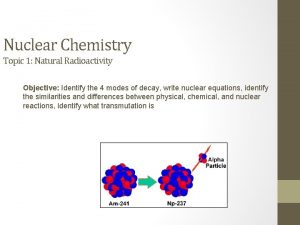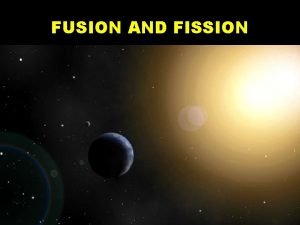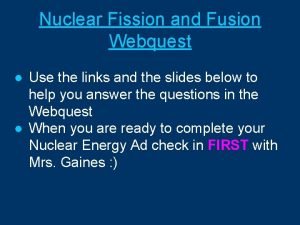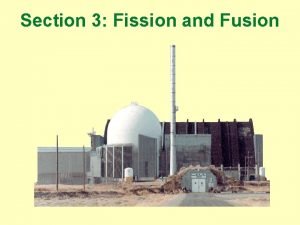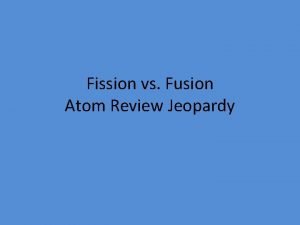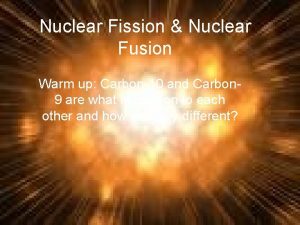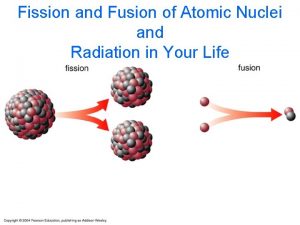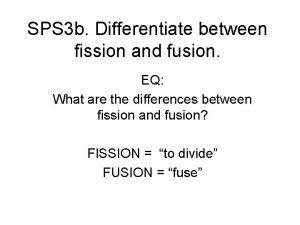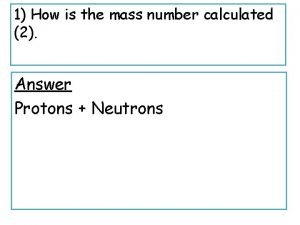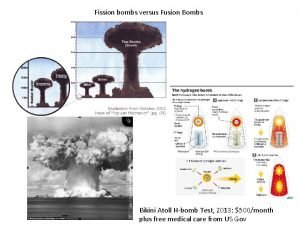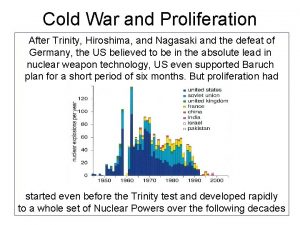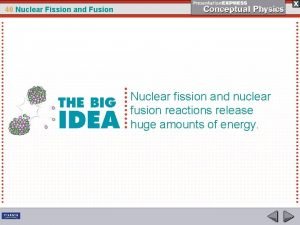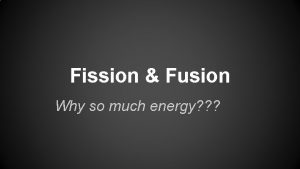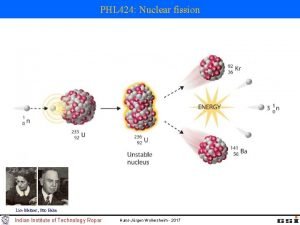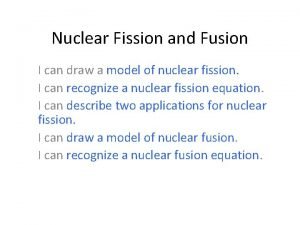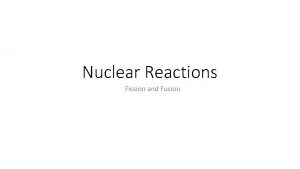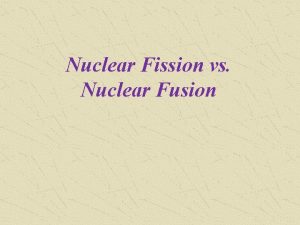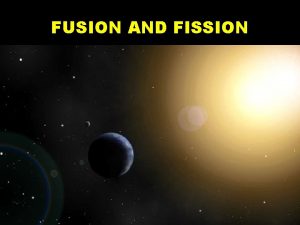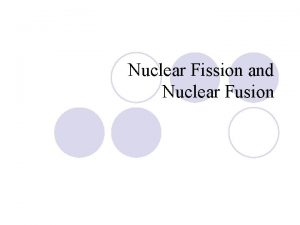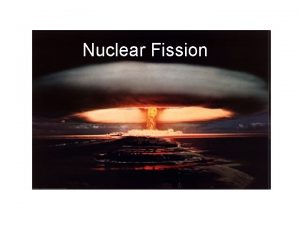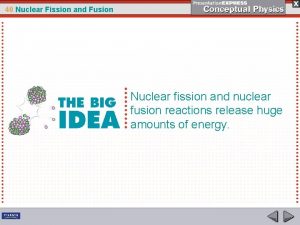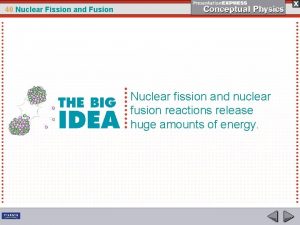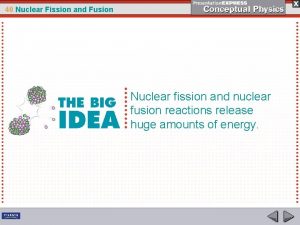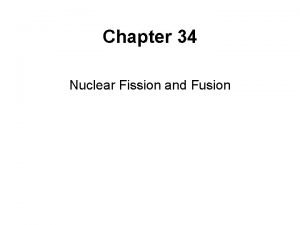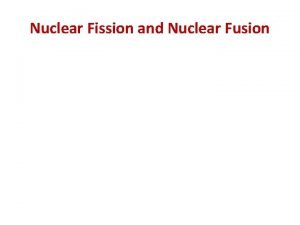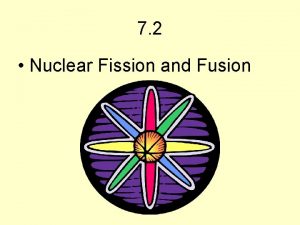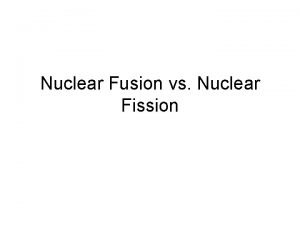Fission and Fusion of Atomic Nuclei I Nuclear















- Slides: 15

Fission and Fusion of Atomic Nuclei

I. Nuclear Fission • Fission - The splitting of the nucleus into fragments (division) • Uranium-235 is struck by a neutron and forms Ba-141, Kr-92 , and additional neutrons. Neutron

II. Chain Reaction • Chain reaction – Nucleus captures a neutron and splits into fragments and produces three neutrons – Products start a new reaction • Critical mass – The minimum mass required to support a self-sustaining chain reaction

III. Nuclear Fusion • Fusion - combining atomic nuclei to produce a nucleus of greater mass • the nuclei of lighter elements (such as hydrogen) are fused together at extremely high temperatures and pressures to form heavier elements (such as helium) • Fusion reactions release more energy than fission reactions • Requires extremely high energies to initiate and sustain • Sun is powered by fusion

euterium ritium

IV. Nuclear Binding Energy • The energy required to break a nucleus into its individual protons and neutrons • Energy released in a nuclear reaction is much greater than in chemical reactions

V. Mass Defect • The mass of the atom is always less than the sum of the masses of individual parts. • Mass defect -The difference in mass between an atom and its (protons, neutrons, and electrons) • The difference in mass has been converted to energy • The energy can be calculated using E=mc 2

VI. Nuclear Reactors • The purpose of nuclear reactors is to keep the chain reaction going without letting it get out of control

Diablo Canyon


San Onofre

Fukushima, Japan


VII. Nuclear Bombs Atomic Bomb • Uses fission • Uses enriched uranium-235 or plutonium • Nagasaki and Hiroshima • May 1945 trial run to Trinity (the first atomic bomb tested-plutonium) in New Mexico Hydrogen Bomb • Uses fission and fusion • 1000 time more powerful than atomic bomb • Uses deuterium 2 H and tritium 3 H • October 30, 1961, Tsar Bomba in Novaya Zemlya used Lithium for its bomb

Sources • • • www. pennenergy. com http: //www. californiareport. org noyonews. net www. sfgate. com enformable. com www. utsandiego. com activerain. com thesportdigest. com www. dailytelegraph. com. au www. 2050 publications. com
 Natural and artificial radioactivity
Natural and artificial radioactivity Fission and fusion similarities
Fission and fusion similarities Nuclear fission and fusion similarities
Nuclear fission and fusion similarities Fission vs fusion
Fission vs fusion Nuclear fission vs fusion
Nuclear fission vs fusion Fission vs fusion
Fission vs fusion Who discovered uranium
Who discovered uranium Fission vs fusion nuclear
Fission vs fusion nuclear Difference between fission and fussion
Difference between fission and fussion How is mass number calculated
How is mass number calculated Fission vs fusion
Fission vs fusion Fission vs fusion
Fission vs fusion Fission vs fusion energy output
Fission vs fusion energy output Fusion or fission
Fusion or fission Nuclear fission lise meitner
Nuclear fission lise meitner Fission reaction equation
Fission reaction equation

